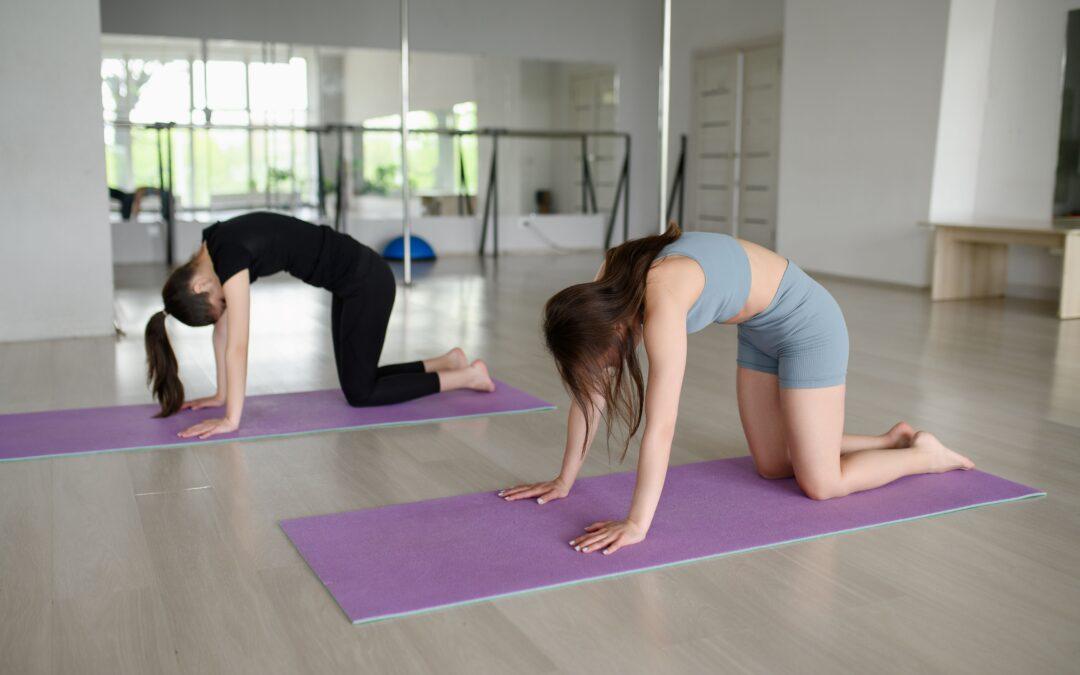If you’re a newcomer to the world of yoga and feeling overwhelmed by the wide selection of poses available, there’s no need to worry! Our dedicated team is here to offer you guidance and support as you embark on your yoga journey. We have meticulously curated a list of 10 fundamental yoga poses that are perfect for beginners, allowing you to establish a strong foundation for your practice.
These poses have been specifically chosen to assist you in developing strength, flexibility, and balance, ensuring a safe and effective start to your yoga journey. So take a deep breath and prepare yourself to experience the life-changing benefits of yoga.
1. Mountain Pose (Tadasana)
Mountain Pose, also known as Tadasana, is the mother of all yoga poses. It forms the basis for many other positions.
How to perform Mountain Pose:
- Stand with your big toes almost touching and your heels slightly apart.
- Press into all four corners of your feet, activating your leg muscles.
- Roll your shoulders back, elongating your torso.
- Extend your arms along your sides, palms facing forward.
The Mountain Pose helps to develop proper posture, balance, and strengthens the legs.
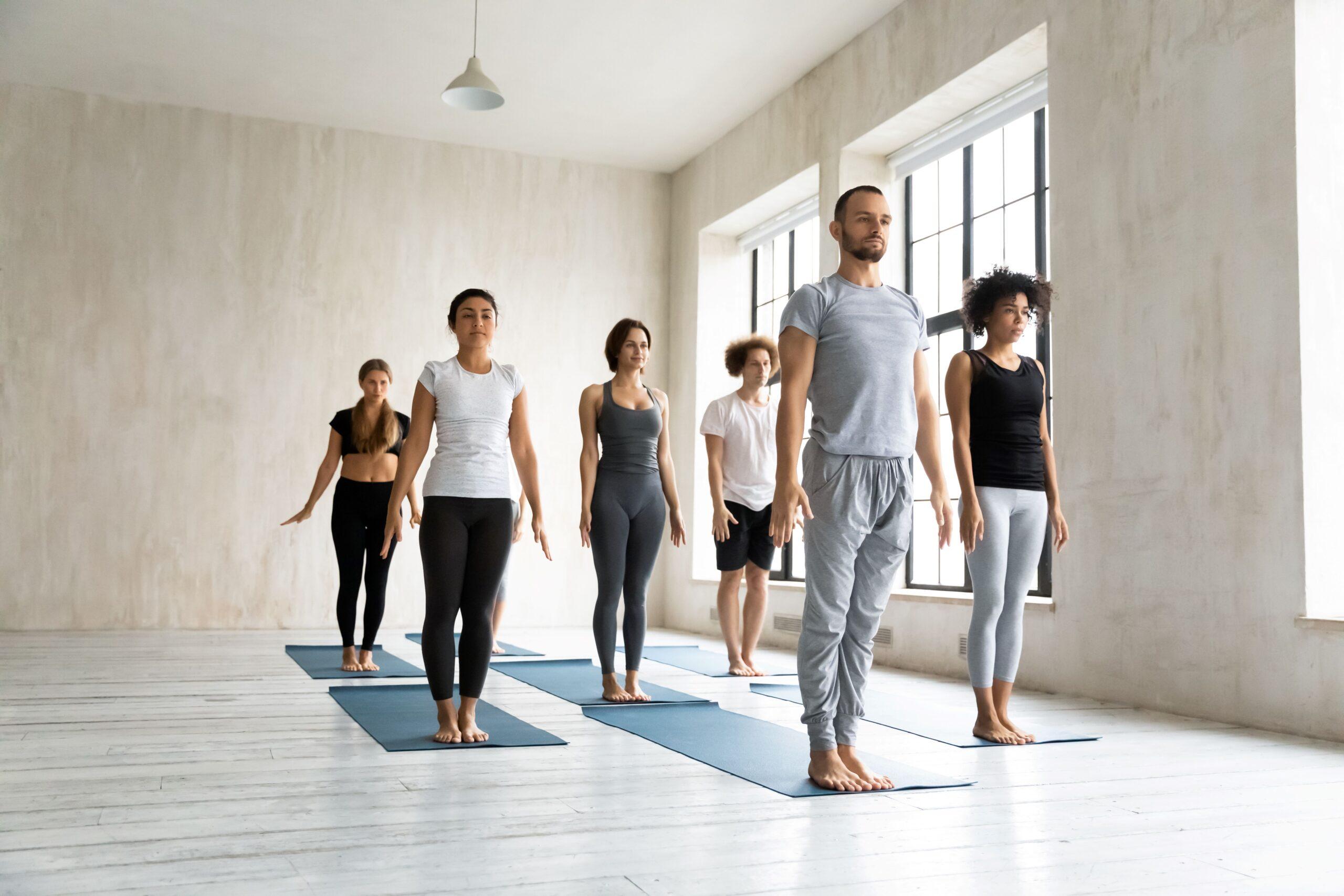
2. Child's Pose (Balasana)
Child’s Pose, or Balasana, is a restorative pose that relaxes the nervous system.
How to perform Child’s Pose:
- Start in a kneeling position with toes tucked under.
- Lower your hips to your heels and lay your chest over your knees.
- Extend your arms along your sides or in front of you.
- Rest your forehead on the floor.
Child’s Pose is the ultimate hip opener. It relaxes the spine, shoulders, and neck, and massages the internal organs.

3. Cat-Cow Pose (Marjaiasana/Bitilasana)
Cat-Cow Pose is ideal for warming up your back and working on spinal inflection.
How to perform Cat-Cow Pose:
- Start on all fours with your hands directly below your shoulders and your knees directly below your hips.
- Inhale and round your back, arching it up as you lower your chin to your chest.
- Exhale, lower your back down all the way to a scoop shape as you lift your head, and tilt it back.
This sequence of movements helps to stretch and awaken the spine, which aids in relieving back pain.
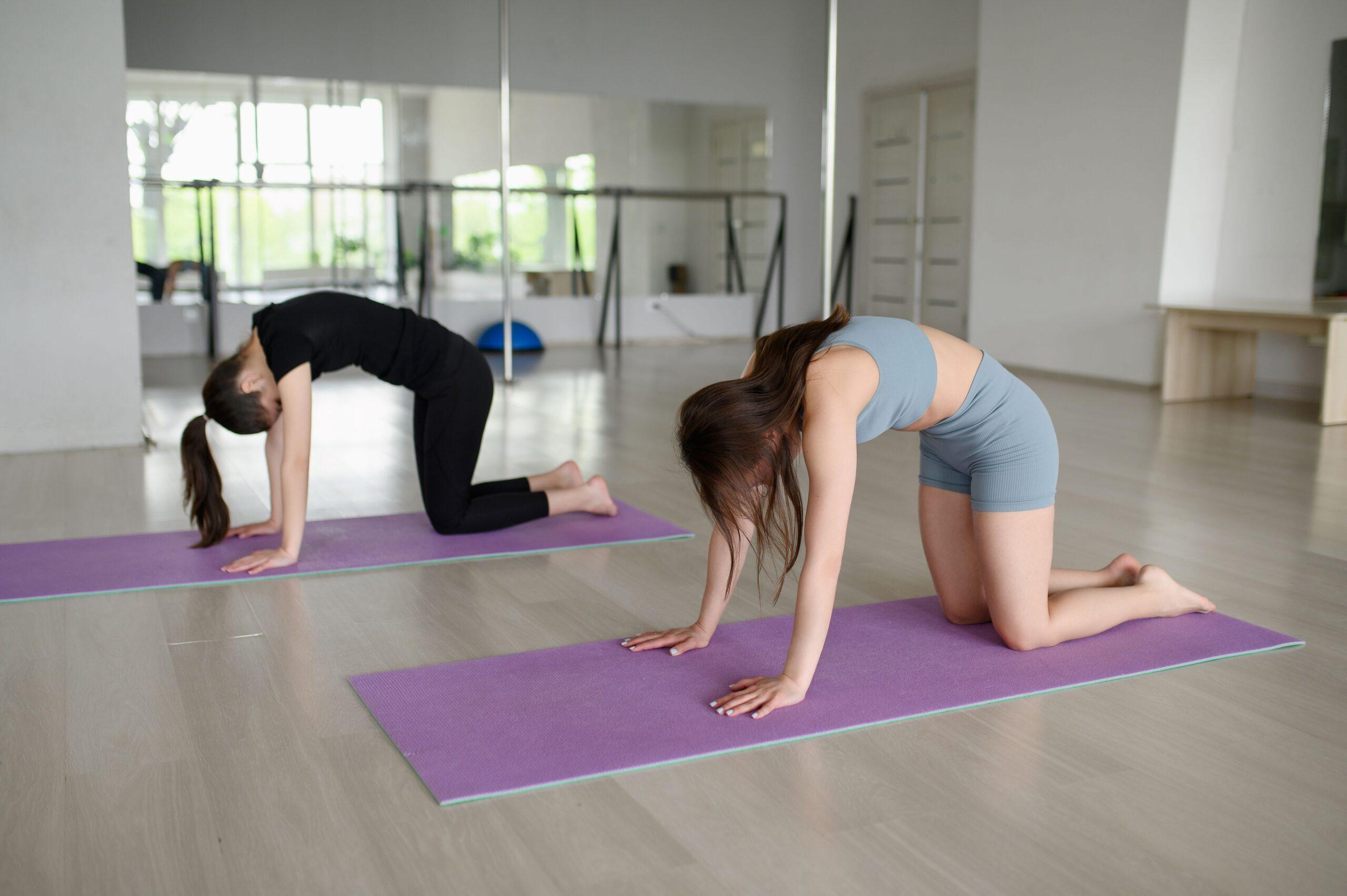
4. Downward-Facing Dog (Adho Mukha Svanansana)
Downward-Facing Dog is an inverted V-shape pose that provides numerous benefits.
How to perform Downward-Facing Dog:
- Start by placing both hands on the mat in front of you.
- Lift your knees off the ground and lift your buttocks and hips toward the ceiling.
- Keep your head down between your upper arms and in line with them.
This pose calms the nervous system, enhances overall flexibility, decompresses the spine, tones the arms, and opens the shoulders.
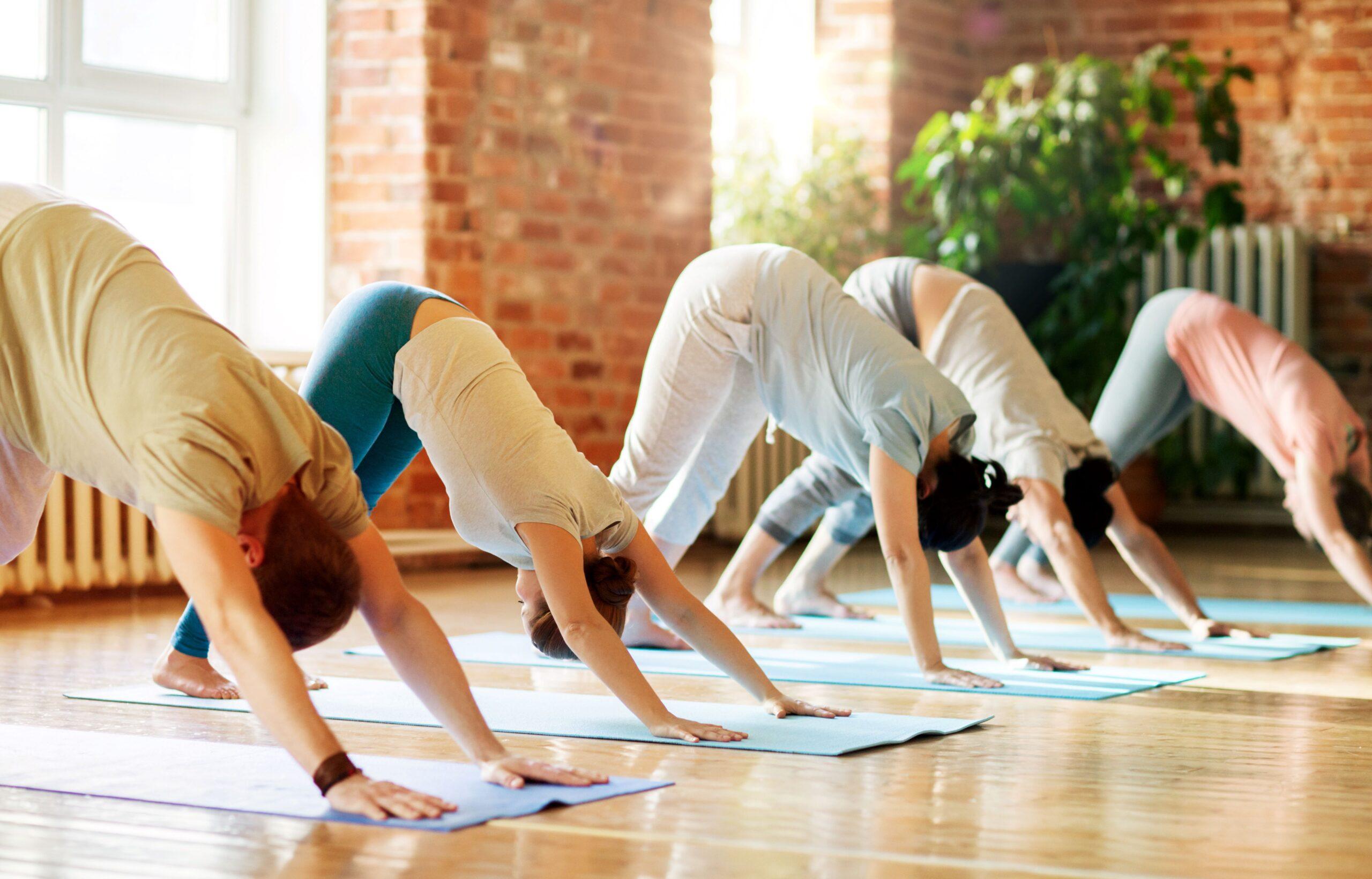
5. Warrior I (Virabhadrasana I)
Warrior I pose is great for strengthening your legs and opening your hips and chest.
How to perform Warrior I:
- Stand straight, then step your left foot back about four feet.
- Raise your arms straight overhead, turning your left foot about 90 degrees to face the left wall.
- Bend your right knee until it’s directly over the ankle.
This pose helps to stretch the body, improve balance, and strengthen the legs.
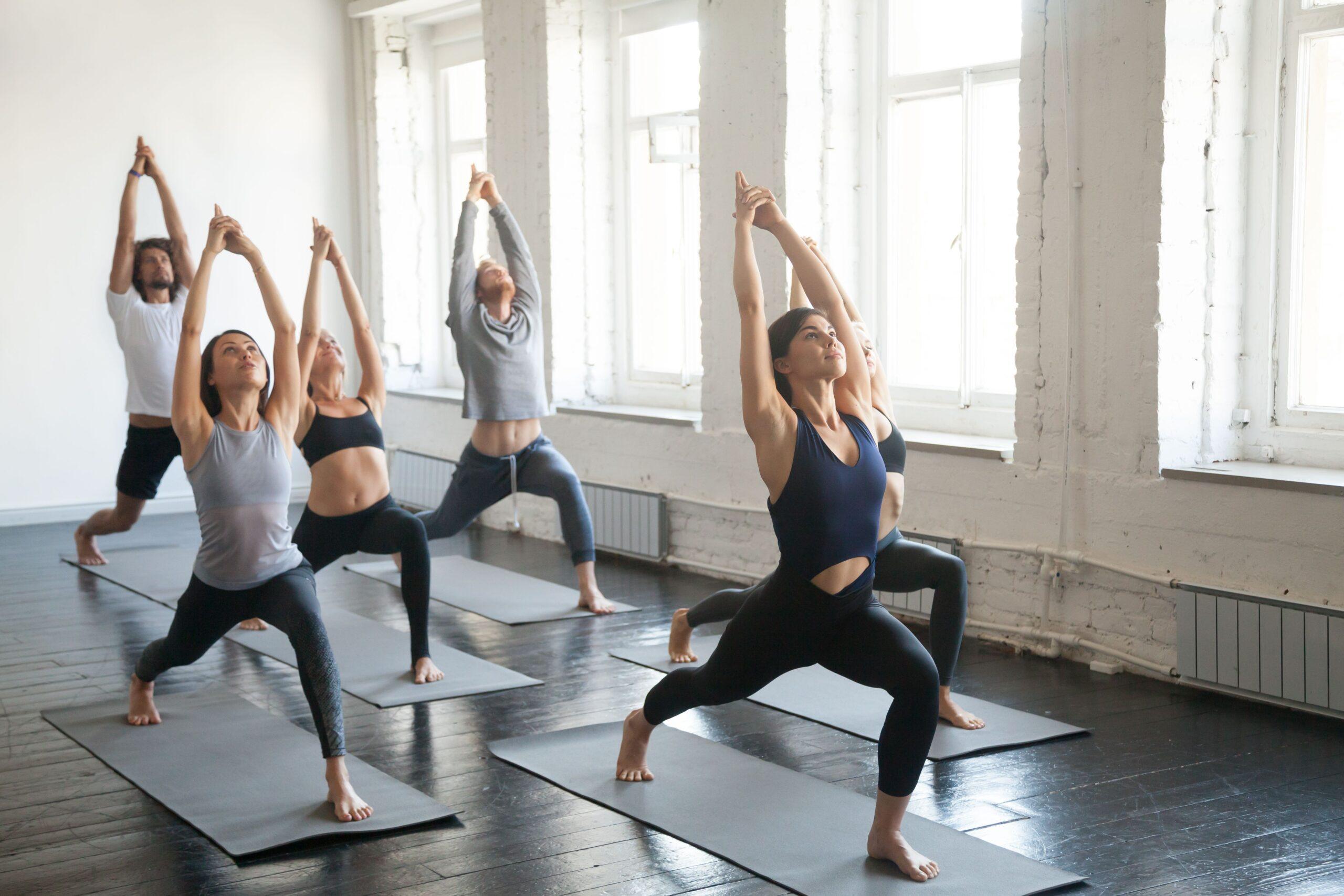
6. Warrior II (Virabhadrasana II)
Warrior II is a slight variation of Warrior I, providing similar benefits.
How to perform Warrior II:
- From Warrior I, rotate your upper body to the side.
- Extend your arms out to the sides, parallel to the floor.
- Keep your gaze forward, over the fingertips of your front hand.
This pose strengthens the core, shoulders, back, and arms, helping you improve your balance.
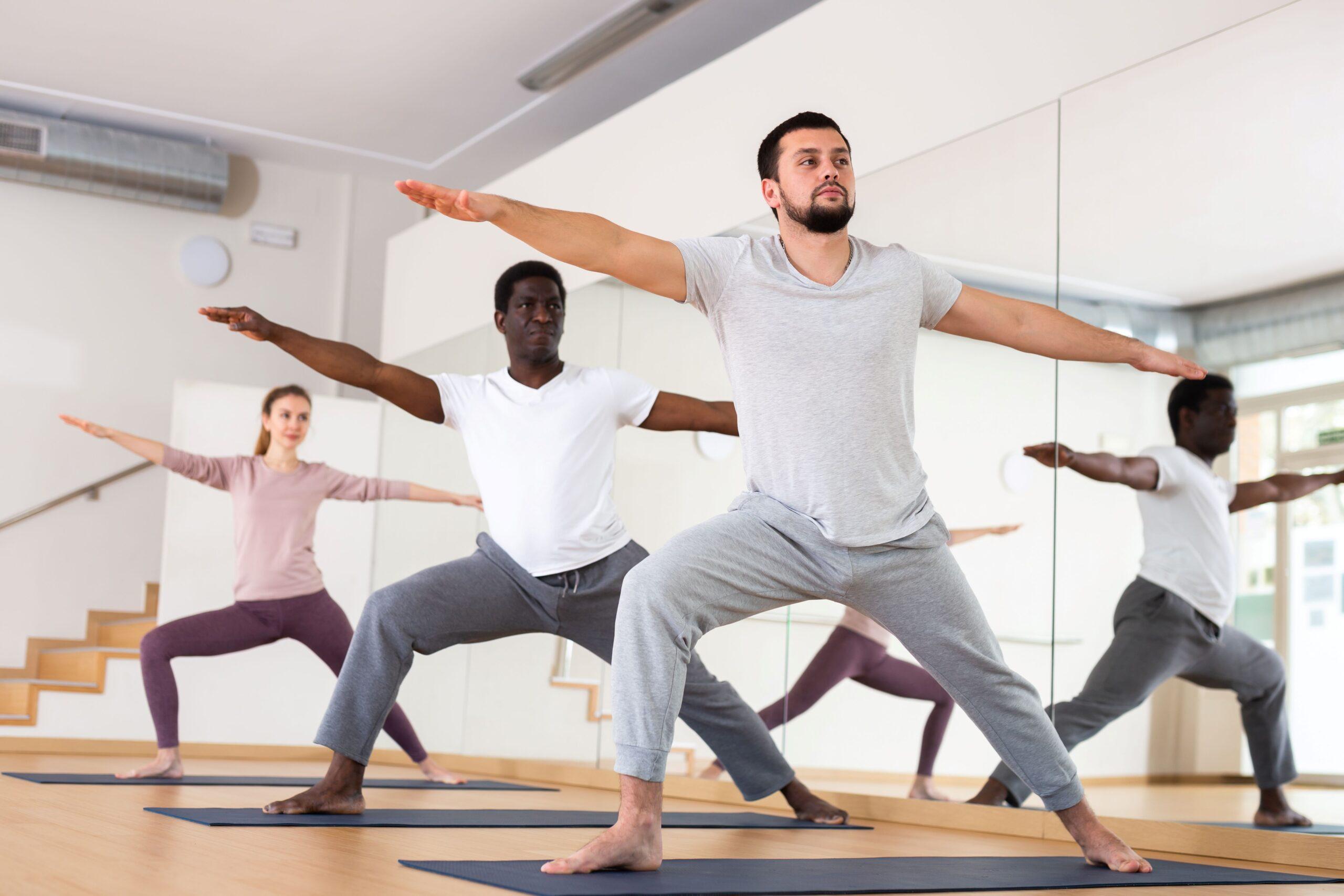
7. Plank Pose (Kumbhakasana)
Plank Pose is one of the best yoga poses for beginners to learn as it builds awareness in your body.
How to perform Plank Pose:
- Start on all fours with wrists directly under shoulders.
- Extend legs to straight behind your body, toes tucked.
- Engage your core and bring your hips level with your shoulders.
This pose strengthens your core, shoulders, back, and arms.
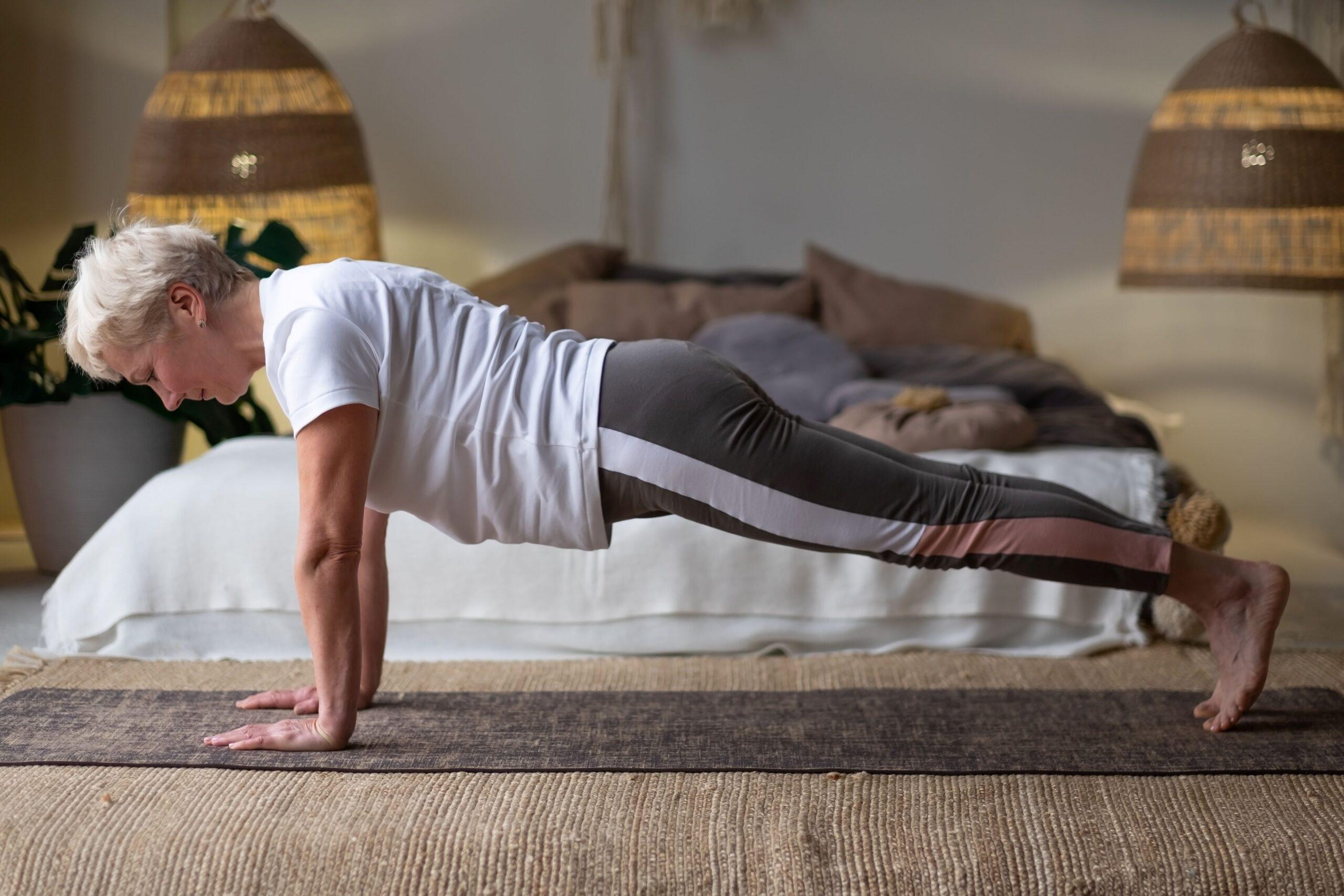
8. Tree Pose (Vrksasana)
Tree Pose is a balance pose that stretches the body and improves balance.
How to perform Tree Pose:
- Stand straight with your feet together.
- Balance on your right leg, bend your left knee out to the side.
- Press your left foot to the inner thigh of your right leg.
This pose also boosts back flexibility and can help to relieve stress.
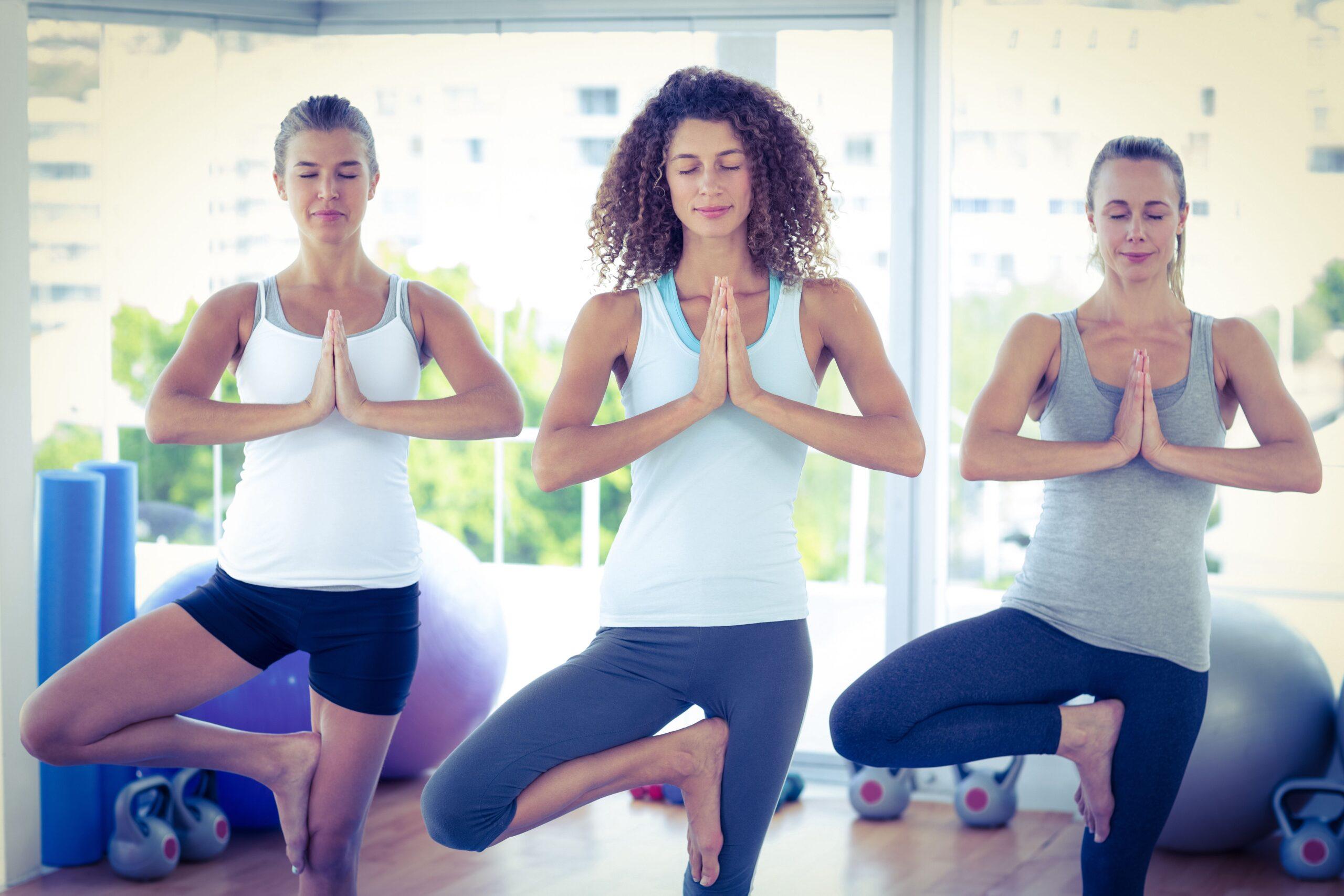
9. Pigeon Pose
Pigeon Pose is a favorite for runners as it boosts hip flexibility and releases the glutes and low back.
How to perform Baby Pigeon Pose:
- From all fours, bring your right knee forward towards your right wrist.
- Adjust your right ankle somewhere in front of your left hip.
- Slowly straighten your left leg behind you.
- Lower your upper body over the bent leg.

10. Easy Pose (Sukhasana)
Easy Pose, or Sukhasana, is a great pose for beginners to use as an assessment.
How to perform Easy Pose:
- Sit cross-legged on a yoga mat with your hands on your knees, palms up.
- Keep your spine as straight as you can.
This pose boosts back flexibility and can help relieve stress.
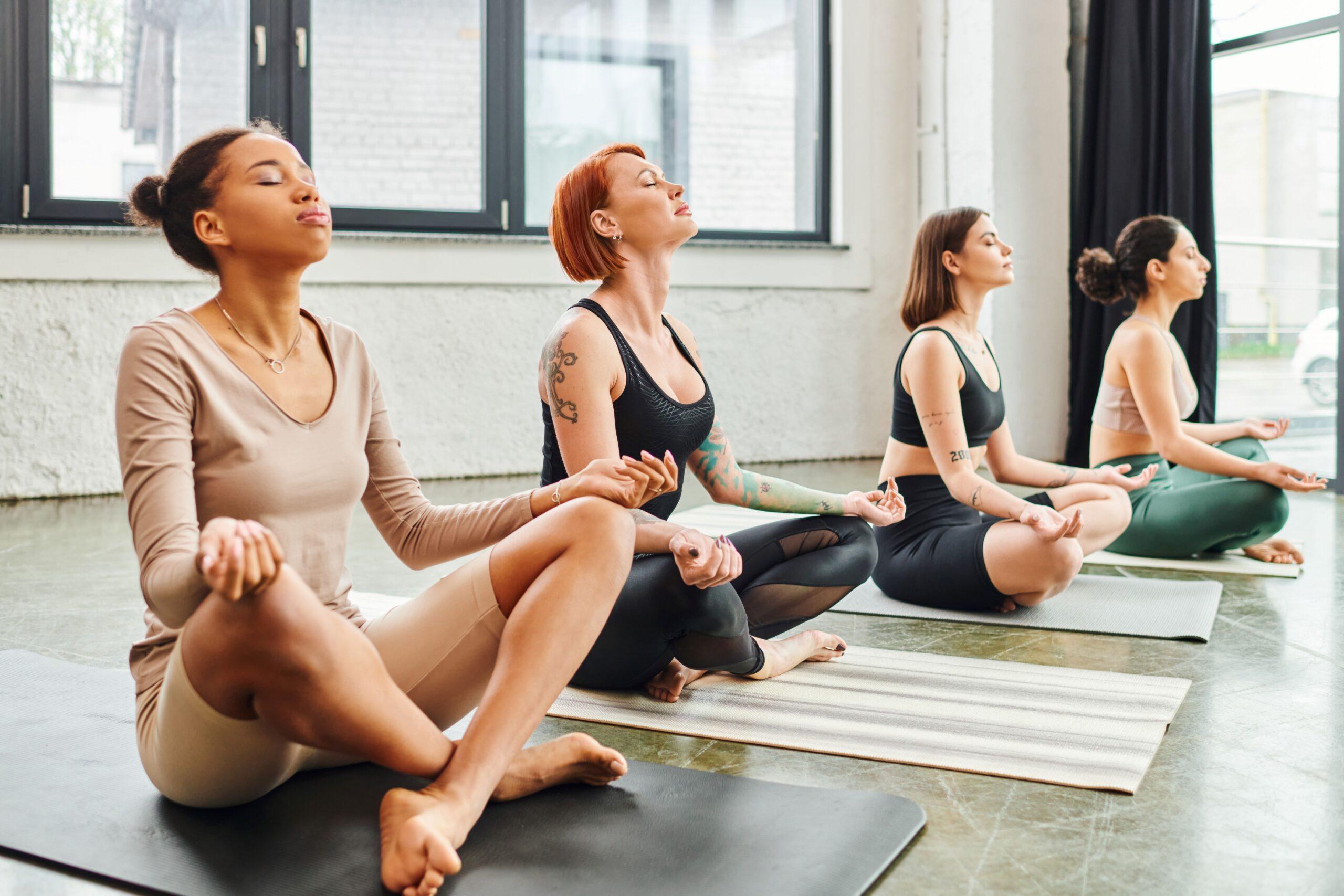
Join Us For A Yoga Class!
Our studio is a welcoming and supportive environment for yoga students of all experience levels. Browse our calendar to find a class.

